Shellfish farmers unsurprised by study on virulent bacteria
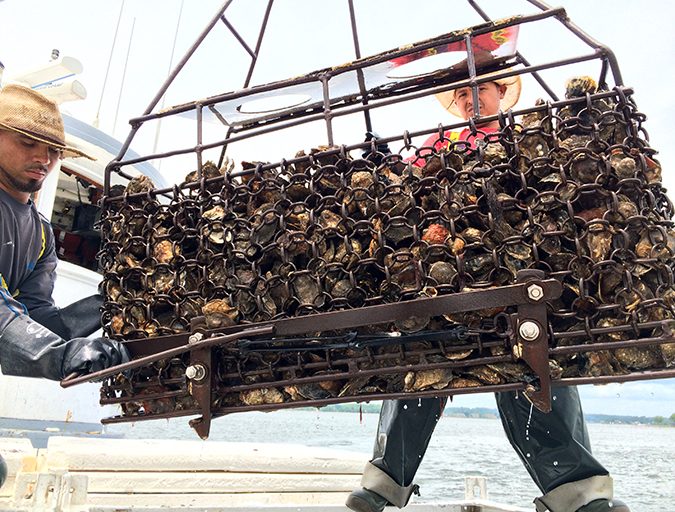
Gloomy news for oyster growers: Scientists say they now have compelling evidence that climate change and warming sea surface temperatures are strongly associated with the presence and spread of vibrio bacteria.
Published in the current issue of the Proceedings of the National Academy of Sciences, the study looked at plankton samples taken over a 53-year period and tested those samples for vibrio. Researchers found that as water temperatures warmed, vibrio abundance increased, and that those changes correlated to data showing an increase in human illness outbreaks.
Certain strains of vibrio, including Vibrio parahaemolyticus (VP) and Vibrio vulnificus can be fatal to humans who eat contaminated shellfish. Its growing presence is a concern for shellfish growers across the nation – even in northern regions like New England or Alaska where vibrio was once rarely found. But where increases in sea temperatures have been recorded, such as the Gulf of Maine, the bacteria’s presence has seemingly become more common.
The new study now establishes the direct link between climate change and an increased presence of vibrio.
“We provide evidence, for the first time to our knowledge, of the important role ocean warming plays in promoting the spread of vibrio within an extensive area of the North Atlantic,” the study’s authors write.
The news came as no surprise to third-generation oyster grower Jimmy Bloom of Norm Bloom & Son Copps Island Oysters, one of Connecticut’s oldest shellfish companies. For New England shellfish farmers like him, the emergence in recent years of a highly virulent non-native strain of VP known as 04:K12 is especially troubling.
Indeed, Bloom says they’ve had to drastically change the way they harvest oysters after a 2013 vibrio outbreak of the 04:K12 strain that sickened 104 people across 13 states was linked to shellfish harvested by the company.
“That strain is much more virulent than anything we have dealt with before,” said Bob Rheault, executive director of the East Coast Shellfish Growers Association.
That outbreak spurred concerns the O4:K12 strain was possibly becoming endemic on the Atlantic coast, and prompted new state requirements on how oysters were to be handled post-harvest.
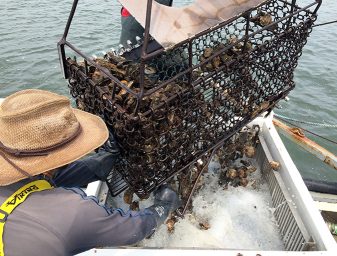
“We used to shuttle oysters off the deck two to three times a day, but it wasn’t enough,” says Bloom. He says they’ve had to change harvest methods and have invested nearly $500,000 on new equipment including a heavier crane, stainless steel cages, an ice machine, refrigeration and more.
“After the 2013 outbreak, we started using an icing slurry. We drop the oysters straight into the chilled water, which brings the meat temperature down below 50 degrees in 15 minutes,” he says.
Fifty degrees Fahrenheit is the threshold at which the bacteria stop multiplying. The oysters are then placed inside foam coolers, and quickly moved to a climate-controlled processing facility. But Bloom’s job no longer ends there. To ensure his oysters remain safe until slurping, they’ve had to spend a lot of time educating the wholesalers and distributors that purchase from them.
“We don’t want to do this work for nothing if it’s not taken care of when it leaves our doors,” he said.
They’re not the only shellfish growers altering harvesting methods in an effort to stem any future vibrio outbreaks. During warm summer months, growers on Martha’s Vineyard, off the coast of Massachusetts, are moving cages to the island’s outer harbor where water temperatures remain cool, hoping to inhibit vibrio growth. Growers now call it “summer pasturing.”
Gone are the days of 10-hour windows from harvest to refrigeration. Like Connecticut, Massachusetts developed a robust Vibrio Control Plan, that now mandates growers ice shellfish within one hour of harvest.
We don’t have good or affordable measurement tools, and the FDA spent a paltry $75,000 on vibrio research for shellfish last year.
According to the Centers for Disease Control and Prevention (CDC), vibrio causes an estimated 80,000 illnesses and 100 deaths in the United States every year. Most cases of Vibrio parahaemolyticus (VP) and Vibrio vulnificus are caused by consumption of raw oysters. But Vibrio vulnificus can also cause illness in swimmers who enter the water with an opened wound – especially in coastal waters between Florida and Texas. And health officials believe the numbers could be even higher, as many cases of vibrio infections go unreported.
All public health laboratories are now asked to forward every isolate of vibrio species they receive to the CDC, where they’re tested to for antimicrobial resistance.
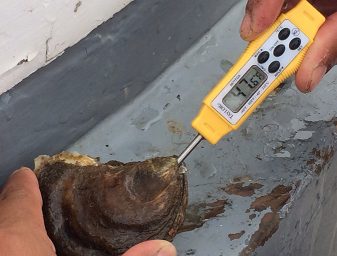
But outbreaks still happen. In Florida, there have been five confirmed deaths, and 24 reported infections so far this year. Health officials there keep track of the data on their website, and have created a public service announcement in an effort to educate residents and visitors, according to Brad Dalton, spokesperson for the Florida Department of Health.
“There are many factors that could be contributing to more cases in any given year – more people in the water, more people with chronic disease, etc. As awareness of the disease increases, we see more diagnosis as well,” said Dalton.
Rheault added that while the new study proves there’s a direct link between warming ocean temperatures and an increase in vibrio, it’s not the only driver impacting infections.
“There are many plausible factors influencing illness rates: temperature rise, consumption trends and a more virulent strain,” he said. “We’ve seen a dramatic increase in oyster consumption during the summer months. Oyster sales have doubled on the East Coast in the past five years.”
Indeed, in an effort to meet growing consumer demand for year-round local oysters, lawmakers in South Carolina are now trying to pass legislation that would allow for summer harvesting – a practice that is currently banned.
“At the same time, there has been a shocking lack of research dollars spent to address the threat,” said Rheault. “We don’t have good or affordable measurement tools, and the FDA spent a paltry $75,000 on vibrio research for shellfish last year.”
Better funding would make researchers like Steve Jones, research professor at the Northeast Center for Vibrio Disease and Ecology at University of New Hampshire happier.
“You can do the studies, but you have to really scrap for funding,” said Jones.
Jones and other colleagues, including molecular biologist Cheryl Whistler, have been working on whole genome comparisons of Vibrio parahaemolyticus, and in 2015 announced a breakthrough in the ability to provide a rapid test for specific strains of vibrio, including O4:K12.
“We’re using it intensively in Massachusetts this summer,” said Jones.
The industry may have a promising new tool in being able to test and identify vibrio in shellfish, but there’s still plenty about the bacteria that they don’t understand.
“What we’re really interested in is the ecology,” said Jones. “In what conditions do these pathogenic strains emerge? They’re not there to infect humans, they’re in the ecosystem because there’s an advantage to them, and we’re interested in finding out what that is.”
Now that you've reached the end of the article ...
… please consider supporting GSA’s mission to advance responsible seafood practices through education, advocacy and third-party assurances. The Advocate aims to document the evolution of responsible seafood practices and share the expansive knowledge of our vast network of contributors.
By becoming a Global Seafood Alliance member, you’re ensuring that all of the pre-competitive work we do through member benefits, resources and events can continue. Individual membership costs just $50 a year.
Not a GSA member? Join us.
Author
-

Clare Leschin-Hoar
California-based journalist Clare Leschin-Hoar covers food policy and seafood. Her work has appeared in The Guardian, NPR, Scientific American, EatingWell and many more. Follow her on Twitter @c_leshin
Tagged With
Related Posts
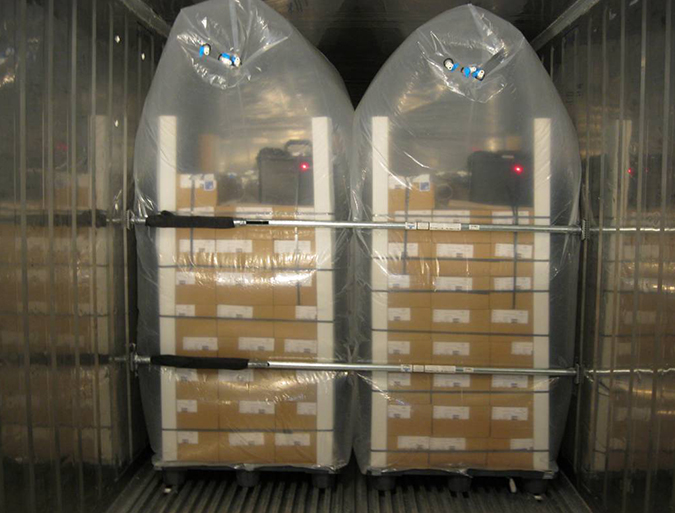
Responsibility
Slow fish: Preventing waste via packaging
BluWrap shipping technology can cut the seafood industry's abysmal food-waste statistics by dramatically extending the shelf life of fresh product. Company CEO Mark Barnekow's mission is to get fresh fish off airplanes and onto ocean-bound cargo ships.
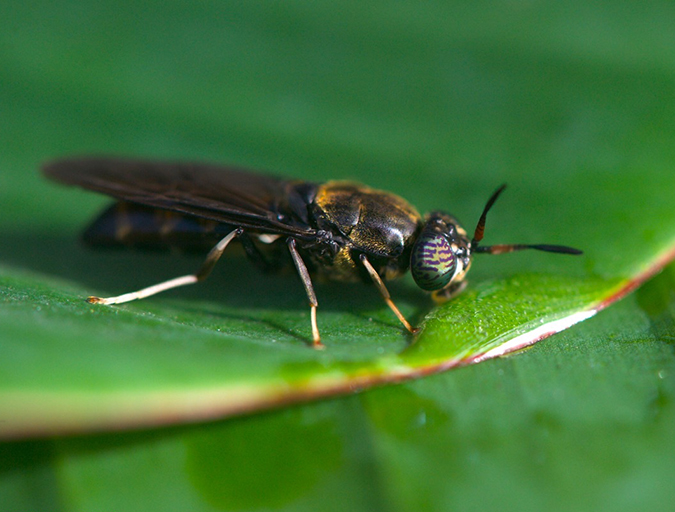
Aquafeeds
Buggin’ out: Tapping the potential of insect meal in aquaculture
Black soldier flies are gaining interest as a leading alternative ingredient in aquafeeds. But will the “ick” factor be a turn-off? Advocate contributor Clare Leschin-Hoar investigates.
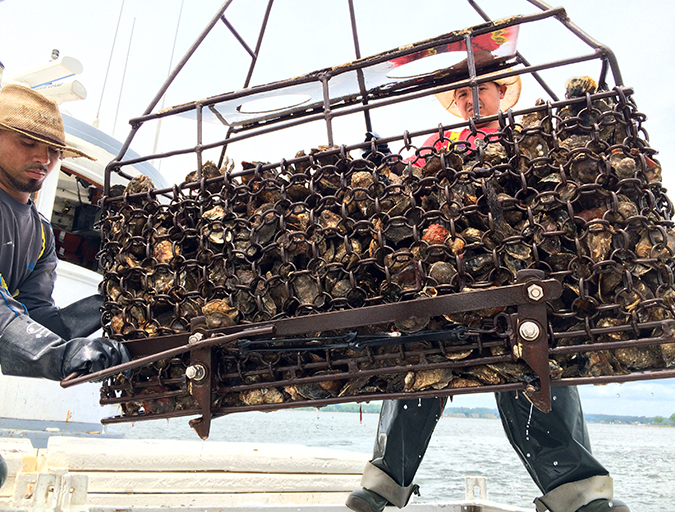
Intelligence
As ocean temperatures rise, so too will vibrio outbreaks
A study using a half-century of data has linked climate change and warming sea temperatures with an increase in illnesses from the common vibrio bacteria. Shellfish growers, fighting a particularly virulent strain of Vibrio parahaemolyticus, are changing their harvest protocols.

Health & Welfare
A holistic management approach to EMS
Early Mortality Syndrome has devastated farmed shrimp in Asia and Latin America. With better understanding of the pathogen and the development and improvement of novel strategies, shrimp farmers are now able to better manage the disease.


